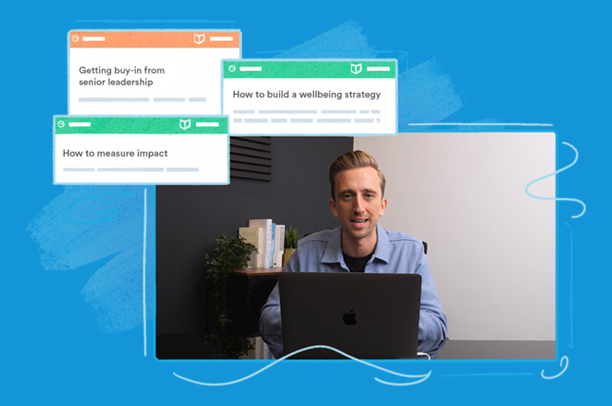In a pre-COVID-19 world, burnout was a growing occupational concern. However, the global issue has since grown even more in 2020 and beyond. Whilst it can come with a variety of mental and physical health symptoms, if left untreated, burnout can make daily life difficult for an individual.
What Is Burnout?
Although burnout is not recognised as a mental illness, it is a form of chronic workplace stress. Often described as a state of physical or emotional exhaustion it often is accompanied by a loss of personal identity and reduced accomplishment.
Symptoms of burnout may include:
- Exhaustion
- Mentally disconnected from their job or negative feelings towards their job
- Reduced professional efficacy
Burnout diminishes an employees’ desire to grow and learn. During a state of burnout, the individual’s energy and mental focus is on survival and they do not have the capacity to think about the future. Burnout is not associated with depression, individuals without depression may still experience burnout at some stage of their working lives.

What Causes Burnout?
For many modern workplaces built on fast-paced work ethics, they generally operate under demanding circumstances. It is often these ‘pressure-cooker’ situations that correlate highly with employee burnout.
Common burnout causes include:
- Unmanageable workload
- Unclear communication from managers
- Lack of manager support
- Unreasonable time frames
- Unfair treatment
Why Is Burnout Bad?
Employees who experience burnout are 63% more likely to take a sick day and 50% less likely to discuss their performance with their managers.
Furthermore, employees with burnout are more than twice as likely to be actively seeking a new job and 13% less likely to be confident in their performance. Not only is this detrimental to the individual’s overall workplace happiness and well being it also costs the business.
How Can I Prevent My Employees From Burning Out?
Managers and employers are largely responsible for the prevention of burnout amongst employees. A key pillar is to understand employees’ most relevant values in the workplace. Whilst managers can’t do it alone, there are components of your wellbeing strategy that help to holistically deal with burnout.
Focus on Wellbeing
Businesses that focus on wellbeing create healthy and happy workplaces, but also contribute to the employees’ personal life too. This can be due to flexible working hours, promoting paid time off and being reasonable about deadlines and how this correlates to your employees’ wellbeing.
When workplaces dictate working long hours or interrupt our personal time, burnout is more likely to occur. Similarly, businesses who tend to favour micro-managing or give orders create larger levels of burnout, company-wide. This is due to employees feeling underappreciated and unsupported.
A wellbeing strategy should include the following five elements:
- Career – Do your employees like what they do each day?
- Environmental – Is the office warm, well lit, and comfortable enough for productivity?
- Community – Do your employees feel safe in their community?
- Financial – Does the salary meet the individuals’ needs?
- Social – Do your employees have solid working relationships?

Train Your Management
An employee’s experience of a workplace is generally through their manager, largely due to expectations, barriers and collaboration. Employees turn to their managers for support and overall influence on how employees feel about their job.
Ensure managers take the time to understand the causes of burnout and how they can go about making the relevant changes to prevent this. By taking control of preventing burnout, it shows their commitment to employee wellbeing.
Help managers identify habits and communications that might be contributing to employee burnout. Ensure conversations around burnout are occurring during meetings so that colleagues can share their own personal experiences around the topic.
When managers have an extensive to-do list, employees can often get neglected. Leaders can also look at managers’ job descriptions and review whether these are beneficial to employees. Perhaps you could review their expectations so that they are able to focus on the wellbeing of their employees first.
It is important to make managers aware of the right questions to ask their employees that help to build trust, rapport and create opportunities for their employees. This improves wellbeing and reduces employee burnout.
Allow Everyone to Have an Opinion
Opinions shouldn’t come from the highest paid earners in the room, rather they should come from everyone. With this, managers should solicit the opinions of their employees. Employees who feel their opinion has been heard feel included and valued.
By having a voice, employees feel they have a certain amount of ownership in their role that helps to prevent burnout from occurring. The best way to implement this into your strategy is to have management instigate an open dialogue.
Look at Your Employees’ Strengths
It’s very easy to point a finger when someone does something wrong, but what about when they do something good? Employees who are given the scope to strive in what they are good at are 57% less like to experience burnout.
Think about why you hired your employees in the first place. This gives you the chance to evaluate the best dynamics in a team that provides individuals to shine and add value to the company.
Takeaways
Work-life balance is extremely important. For burnout to be effectively prevented there are some key contributors, like that of micro-managing to inflexibility. The right amount of job autonomy and flexibility helps to alleviate burnout giving employees control over the tasks at hand. Burnout is far easier to manage in its prevention as opposed to its cure.
Everymind’s mission is to prevent the aforementioned mental health illness from arising in the workplace. We’re doing this by normalising the conversation around the topic and through the use of technology of the Everymind app. The app s designed to offer mental health support for employees 24/7, whether in or outside of the workplace. More information and how to sign up can be found here.








